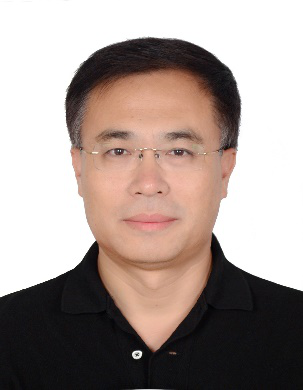Welcome to
MLBDBI 2019

Prof. Jianming Zhu (click)
Dean of the School of Information, Central University of Finance and Economics, China
Title:OBBC: A Blockchain-based Data Sharing Security Scheme for Open Banking
Abstract:
The concept of open banking has been a powerful trigger for the revolution in the financial services industry. When financial institutions disclose application programming interfaces (APIs) to third-party providers (TPPs), the biggest system risks concern issues such as malicious attack, data leakage and tampering, privacy disclosure and more. API is a new communication path for information systems, but it could be misused and tampered. To address this, we conceptualize a blockchain-based data sharing scheme for open banking named OBBC, in which the API’s information can be saved in a blockchain, that no one can dominate it. We propose an API consensus mechanism aims to ensures that the open API can’t be maliciously tampered. Moreover, zero knowledge proof and Merkel tree structure are used to realize that users’ privacy protection. In particular, we give the framework of our scheme and compare with existing data sharing schemes. We further implement a software prototype on fabric framework with real-world dataset. Experiment results show the feasibility, usability and scalability of our proposed open banking system.
___________________________________________________________________________________________

Assoc.Prof. Xiaolong Zhang(click)
School of Information Science and Technology, the Pennsylvania State University, US
Director of Knowledge Visualization Laboratory, US
Title:Visual Analytics: Basic Ideas, Examples, and Some Challenges
Abstract:
To extract useful information from massive data, we often need tools and systems that can combine the powers of computation and human intelligence. Visual analytics systems offer such opportunities by integrating advanced algorithms into systems to handle complex data, externalizing computational results in human-perceivable visual graphs, and supporting user-driven interactive analytical activities. In this talk, I first briefly introduce basic ideas of visual analytics – its models and research paradigms, and then present two of my current research projects – one on visual analytics of MOOC data and one on using visual analytics to understand a data-mining algorithm. Finally, I discuss some of my thoughts on the current challenges in visual analytics research.
__________________________________________________________________________________________

Prof. Nikolaos M. Freris (click)
Vice Dean of International College, University of Science and Technology of China (USTC), Greece
Title:Learning in Cyberphysical Systems
Abstract:
Cyberphysical Systems (CPS) are very large networks of “smart” devices (possessing sensing, communication, and computation capabilities), that control physical entities. Notable examples enlist Smart Cities, Smart Grids, Intelligent Transportation, Sensor Networks, and Swarm Robotics. This keynote talk will comprise two parts:
In the first part, we will present two methods for real-time learning in CPS: a) Sparse Kernel Density Estimation (S-KDE), with application in online estimation of travel time densities in transportation systems, and b) Sparse Matrix Decomposition (S-MD), applied to online detection and localization of forced oscillations in smart grids.
The second part will highlight the fundamental balance between data transformation and data utility in machine learning. In Big Data applications, a key challenge lies in the fact that the data are hardly ever available in their original form, e.g., due to compression, anonymization, encryption, or right protection. We will showcase methods for exact learning from inexact data, with provable fidelity guarantees, in specific: a) Optimal distance estimation of compressed data series b) Nearest Neighbor preserving watermarking c) Cluster preserving compression, and d) Distributed consensus on encrypted data.
__________________________________________________________________________________________

Dr. Paul Blondel(click)
MIS/Universite Picardie Jules Vernes, France
Title: How Object Detection has been transformed by Deep Learning
Abstract:
There have been tremendous improvements in Object Detection in the last decade. This started with a simple yet efficient approach: training a classifier on object examples and using this trained model on plain images to detect the potential objects. At that time, SVM and Boosting algorithms were very popular. The performances were good enough for researchers to start working on real life applications such as: detecting faces, detecting pedestrians, etc. However, the improvements quickly plateaued. Fortunately, a few years after, Deep learning changed the game in Object Detection. Since then, detection performances kept improving in accuracing and speed. Nowaday, these detection algorithms are used by many industries for real life applications. In this keynote I will talk about the different components of an object detector, and how each of them has improved since Deep learning. I will explain step by step how Deep learning is breaking one by one the chains of modern Object Detection.
___________________________________________________________________________________________

Prof. Georgios Theodoropoulos
Southern University of Science and Technology, China
Title: Modelling and Simulation in the Era of Big Data
Abstract:
The emergence of extreme scale computing systems and the data explosion have presented an unprecedented opportunity for the analysis of systems at a rapidly increasing scale, complexity and granularity. Digital Twins is the culmination of this paradigm shift and calls for an info-symbiotic intermingling of “what-if” and data analytics approaches at a grand scale that would enable holistic analysis of complex socio-technical systems-of-systems. The talk will focus on the interplay between simulation and data in info-symbiotic systems, identifying gaps and opportunities and discussing some concrete examples.











